Samsung Galaxy Note 8 vs iPhone 7 Plus
Big names, big phones
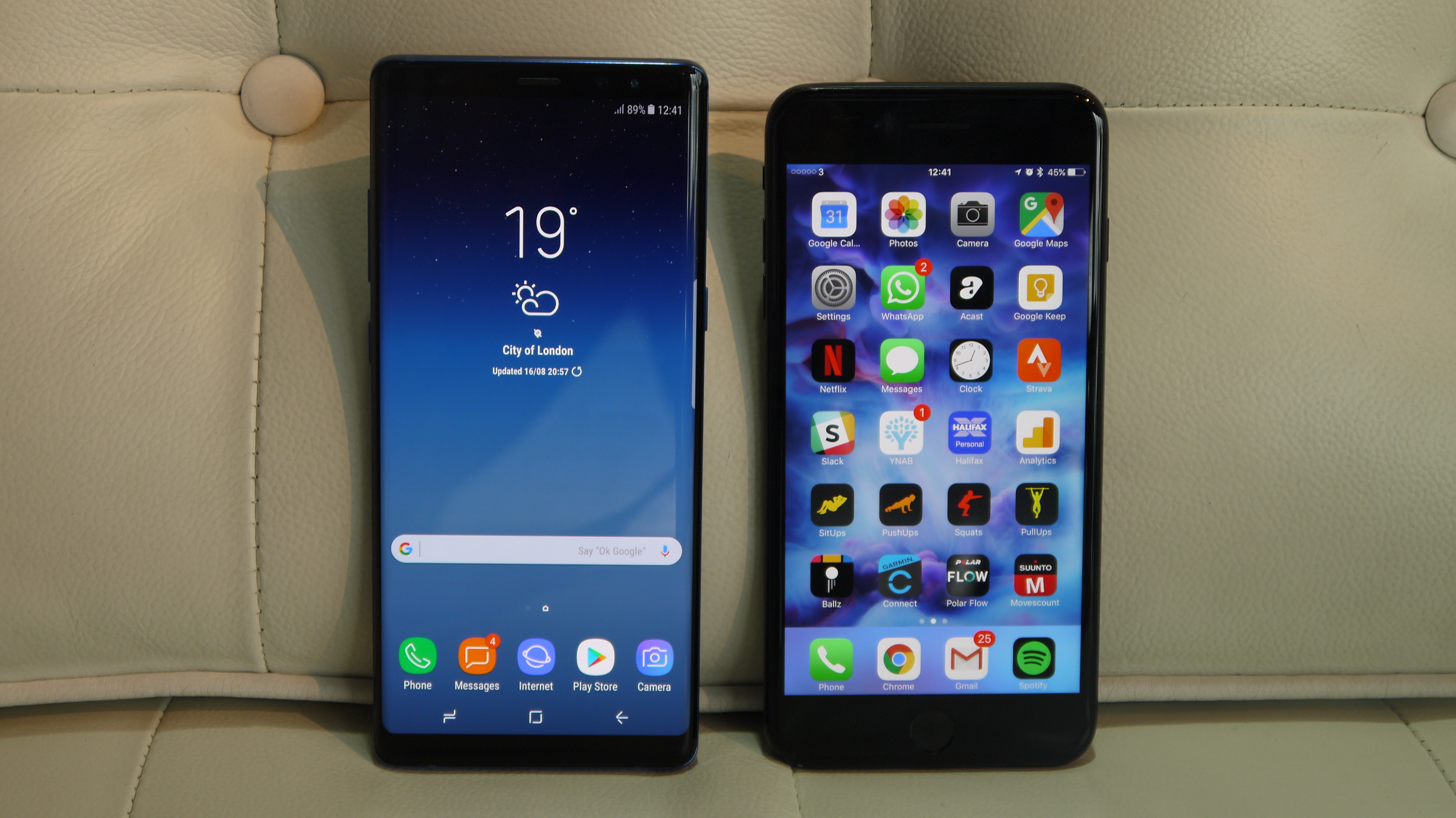
The Samsung Galaxy Note 8 has arrived, a bigger phone that's packed full of tech and features that match - or exceed - the flagship Samsung Galaxy S8.
But its main rival – at least until the iPhone 8 arrives – is likely to be the iPhone 7 Plus, Apple’s latest phablet, and a similarly feature-packed powerhouse.
So how do these two juggernauts compare? Read on for a full rundown.
Design
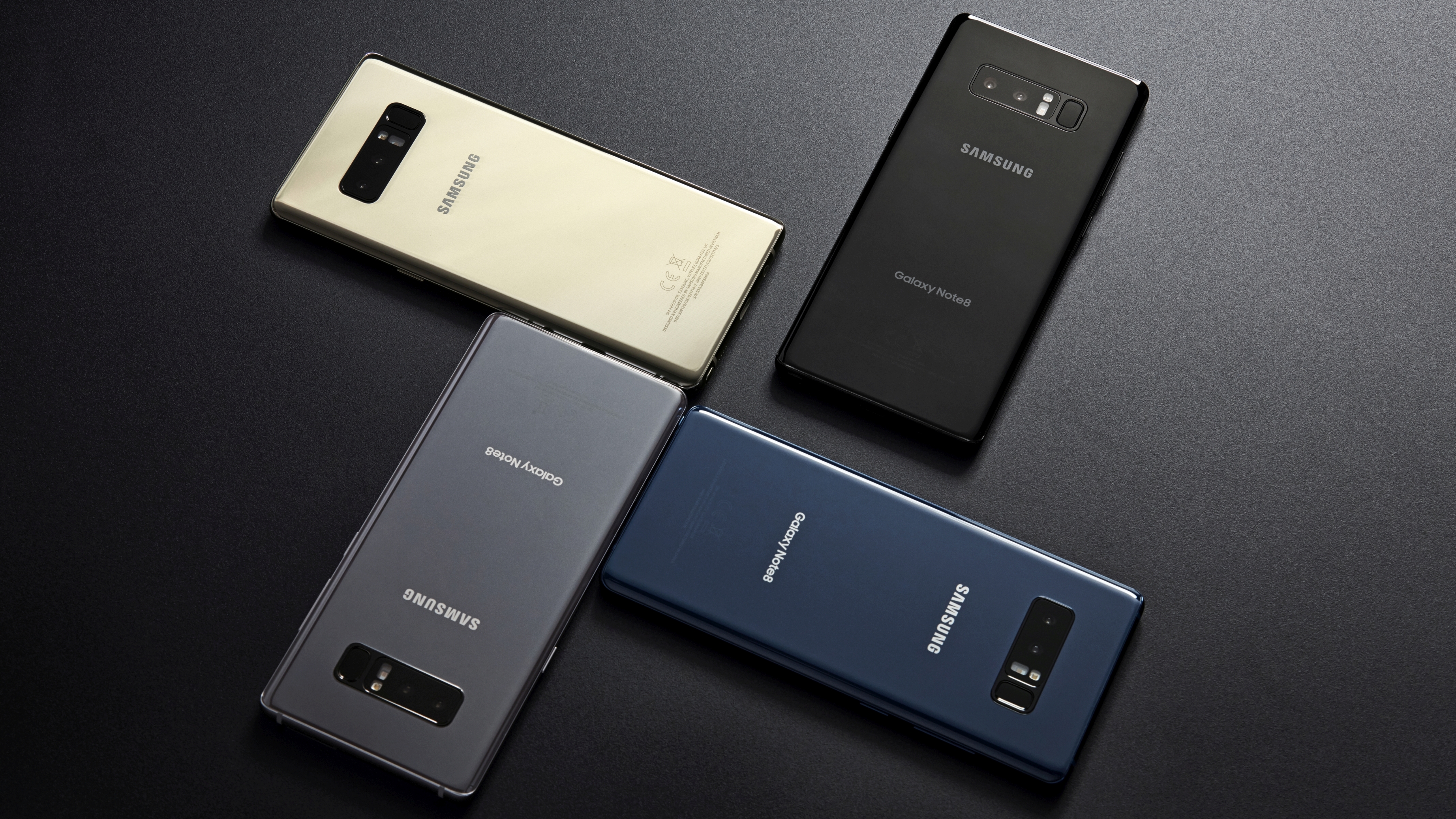
The Samsung Galaxy Note 8 has curved glass on the front and back with a metal frame sandwiched between. It’s a familiar albeit premium design from Samsung, and one which comes in a large - but not as massive as you might expect – size, at 162.5 x 74.8 x 8.6mm and 195g.
The Note 8 is launching in Orchid Grey, Midnight Black, Maple Gold and Deepsea Blue, and it’s IP68 certified dust and water resistant, meaning you can submerge it to a depth of 1.5 meters for up to 30 minutes.
The iPhone 7 Plus meanwhile is a phone you’ll likely be familiar with, as it’s been out a while and has a similar design to past Apple handsets.
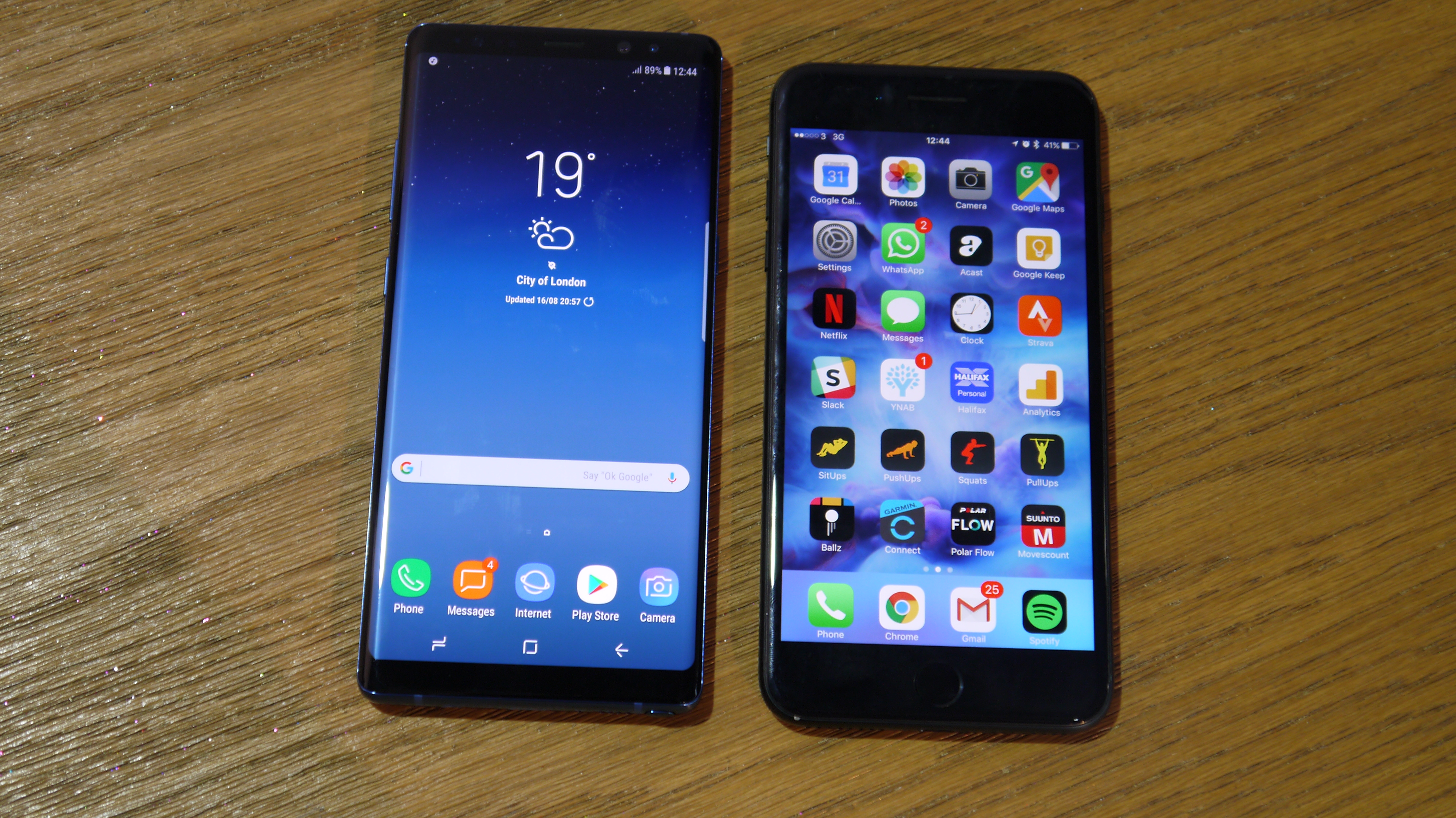
It has a slim metal shell with gently curved edges, and while the Galaxy Note 8 only has a sliver of bezel above and below the screen, the iPhone 7 Plus has quite large ones, in part to house the fingerprint scanner, which on the Note 8 is on the back.
Sign up for breaking news, reviews, opinion, top tech deals, and more.
Though the Note 8 still manages to jam an iris scanner above the screen, a feature which the iPhone 7 Plus lacks.
In reality, the phones feel very different in the hand. The rounded metal finish of the iPhone is smoother than the more friction-filled glass of the Note 8, but you feel like you're getting so much more phone from Samsung thanks to the larger display on the front.
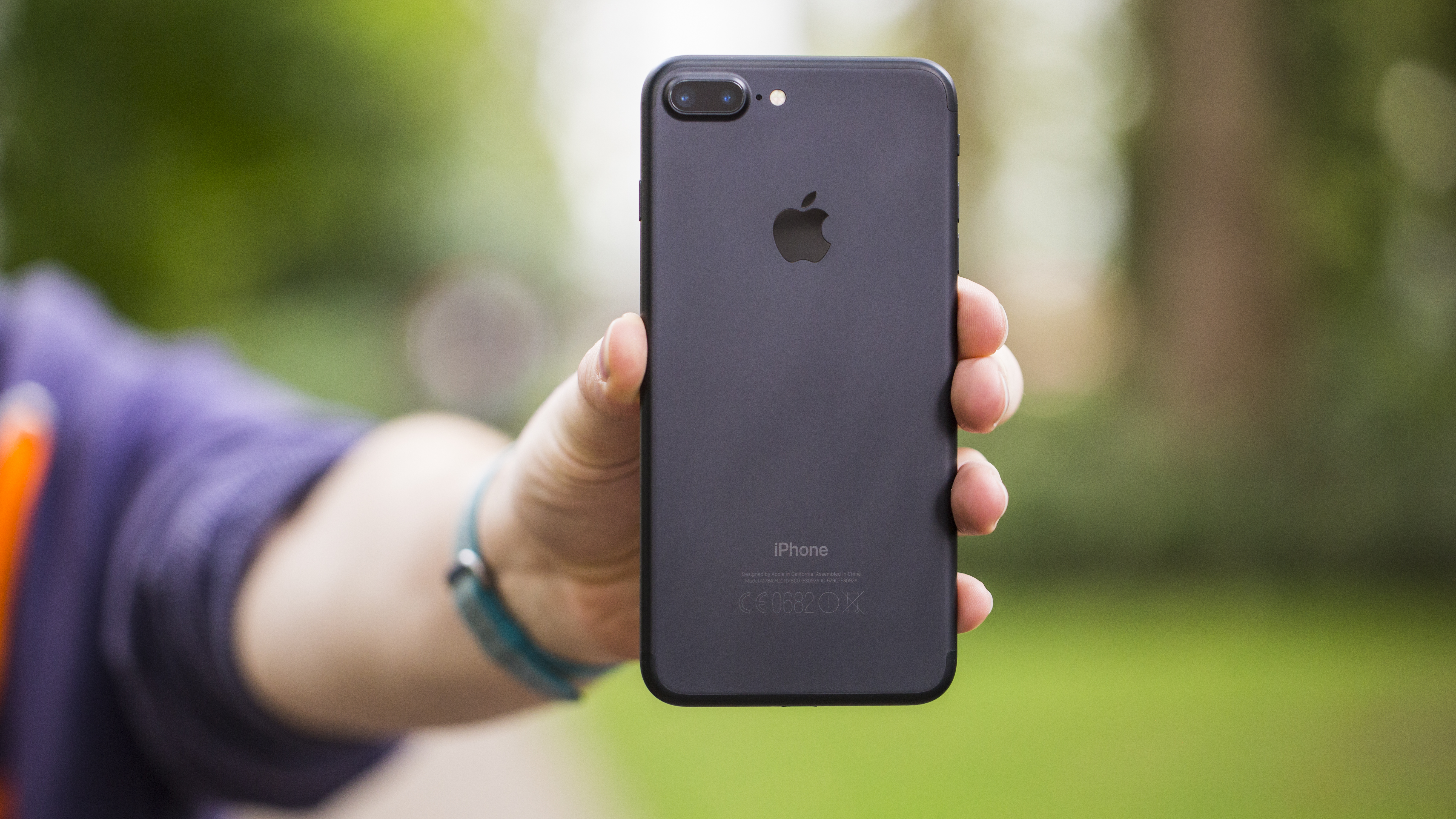
Those relatively large bezels also mean that while the iPhone 7 Plus has a significantly smaller screen than the Note 8 its dimensions are only a little smaller, at 158.2 x 77.9 x 7.3mm and 188g.
That super-slim design also means there’s no 3.5mm headphone port, which handily there is on the Samsung Galaxy Note 8.
Like the Note 8, the iPhone 7 Plus is dust and water resistant, though not quite to the same extent, with its IP67 certification allowing you to use it at depths of 1 meter for up to 30 minutes, and it comes in Jet Black, Black, Silver, Gold, Rose Gold and Red.
Display

The Samsung Galaxy Note 8 has a huge 6.3-inch 1,440 x 2,960 QHD+ display with a pixel density of 521 pixels per inch, and like other recent Samsung flagships it’s a curved, ultra-widescreen Super AMOLED display.
The iPhone 7 Plus has a comparatively small 5.5-inch 1,080 x 1,920 screen, with a pixel density of 401 pixels per inch.
It’s an LCD screen, which is typically less vibrant than AMOLED, and it’s flat, with larger bezels than Samsung’s phone, and a more conventional 16:9 aspect ratio.
Both screens have additional tricks too. The Galaxy Note 8 lets you swipe in from the edge to access a customizable menu, and of course it also has an S Pen, letting you draw and write on the screen.
The iPhone 7 Plus meanwhile has 3D Touch, allowing the display to respond in different ways to different amounts of pressure, for example by opening a menu with a hard press or launching an app with a light one.
In practice, both screens are clear and colorful though, with impressive technology thrown in to make them look as sharp as you'd like.
The Note 8, however, impresses more thanks to the edge-to-edge display, and we'd expect the iPhone 8 to do the same thing.
OS and power

Both of these phones are the most powerful each company has on the market (at the time of writing) and are worthy of the attention if you want the maximum amount of grunt.
There’s 6GB of RAM in the Samsung Galaxy Note 8, along with either an octa-core Snapdragon 835 chipset if you live in the US, or an octa-core Exynos 8895 one elsewhere. Those are both top-end chips and will give a lot of speed under the finger.
The iPhone 7 Plus has no shortage of power either, with 3GB of RAM and a quad-core Apple A10 Fusion chipset. That might sound like a step down from Samsung’s, but as ever Apple proves that numbers aren’t everything, as the iPhone 7 Plus can easily compete with the best-performing phones around.
There’s also plenty of storage in both phones, with the Galaxy Note 8 coming in a choice of 64GB, 128GB and 256GB sizes, along with a microSD card slot allowing you to add up to 256GB more, while the iPhone 7 Plus comes in 32GB, 128GB and 256GB sizes, but with no microSD card slot.
As for operating systems, the Samsung Galaxy Note 8 comes with Android 7.1.1, rather than the newly announced Android 8 Oreo, though we have no doubt that the latest version will reach Samsung’s phablet sooner or later.
The iPhone 7 Plus meanwhile runs iOS 10.3.3, and will be upgradeable to iOS 11 when that lands later this year.
Camera and battery
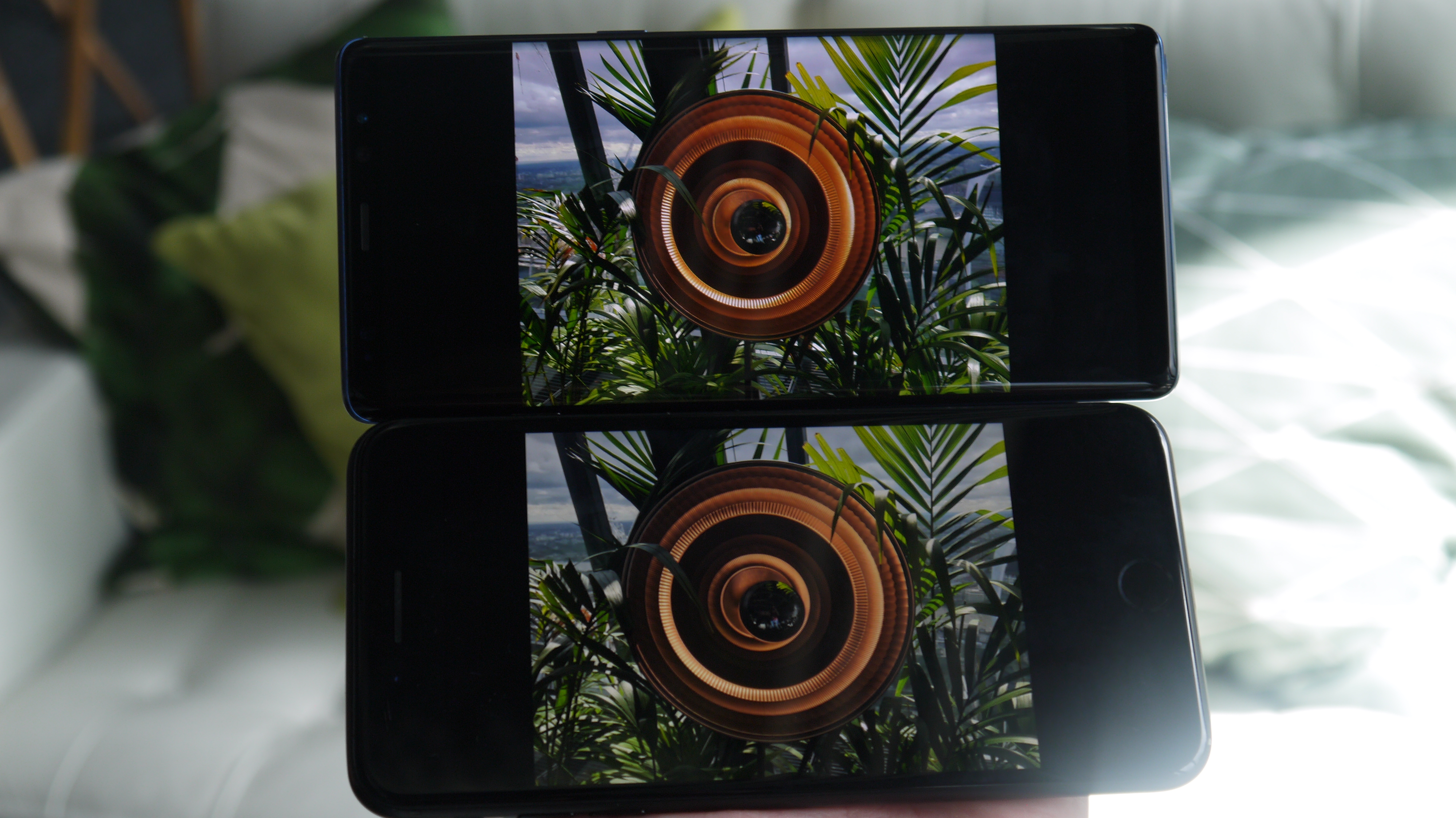
The camera is perhaps the most upgraded component of the Samsung Galaxy Note 8, as for the first time on a Samsung phone it’s a dual-lens one, offering both a wide-angle 12MP f/1.7 lens and a telephoto 12MP f/2.4 one.
Both lenses have optical image stabilization to keep your shots steady, and combined they allow for some clever features. For example, you can adjust the depth of field before and after you take a photo, or take two pictures at once, with a close-up shot from the telephoto lens and a wide-angle shot from the other.
The iPhone 7 Plus also has a 12MP dual-lens camera, with an f/1.8 wide-angle lens and an f/2.8 telephoto one. Those f-stops mean the lenses on the iPhone 7 Plus have smaller openings, letting less light in than the ones on the Note 8.
And that’s not the only way in which the Note 8’s has an on-paper advantage, as only the wide-angle iPhone 7 Plus lens has optical image stabilization.

However, on-paper specs aren’t everything and comparing the two in a real-life environment the difference between the two cameras is interesting.
The iPhone seems to take brighter photos in low light, but the distortion is higher - and when taking something of mixed light levels, both phones offer stunning pictures in different ways.
The iPhone 7 Plus offers the more natural snap, where Samsung's offering is more vivid, colorful and - well - attractive in a filtered kind of way. It's a really subjective thing but both are technically excellent.
It’s also got some clever skills of its own, including the ability to blur the background of a shot for a striking bokeh effect, similar to what the Note 8 can do, and to get a 2x optical zoom.
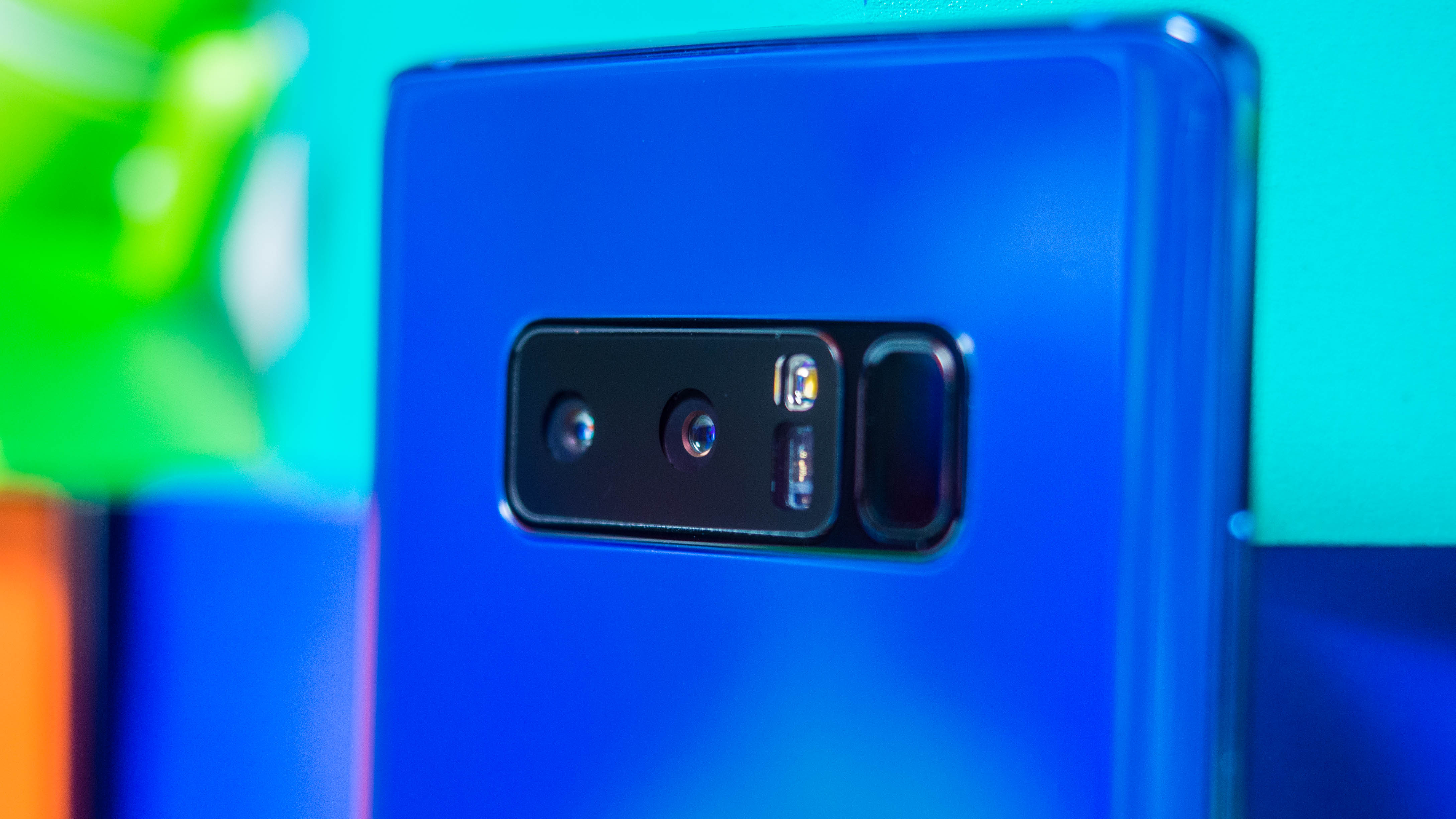
Round the front the iPhone 7 Plus has a 7MP snapper with an f/2.2 aperture, while the Galaxy Note 8 has an 8MP f/1.7 one.
For battery, on the Samsung Galaxy Note 8 you get a 3,300mAh one, with fast charging whether you juice it up with or without wires. The iPhone 7 Plus has a 2,900mAh battery with no fast or wireless charging.
It’s smaller then, but don’t forget that the iPhone 7 Plus also has a smaller screen - with fewer pixels - to power. That said, in a straight fight where the specs are the same, we'd back the Galaxy Note 8 to win as Samsung's battery management is generally more efficient.
Samsung Galaxy Note 8 vs iPhone 7 Plus price
The iPhone 7 Plus, which starts at $769/£719/AU$1,269 for a 32GB model and rises to $969/£919/AU$1,569 for a 256GB one, is certainly one of the most expensive on the market.
We're used to Samsung's phablets costing a lot, but the Note 8 is going to cost an astronomical £869 (which should be around $950/AU$1200). We're used to Note models being expensive, but given the Note 7 cost £749 ($850, AU$1,349) when it briefly launched... this is a big increase.
Takeaway
The iPhone 7 Plus is one of the very best phones available right now, and on the strength of its specs and features it’s likely that the Samsung Galaxy Note 8 will be as well.
We’ll let you know how it fares in our full review, but assuming it lives up to its potential the Note 8 could be the phone to choose if you want a truly massive screen, or if you care about productivity, thanks to its S Pen stylus.
While if you want something big, but not quite that big, then the iPhone 7 Plus could be a better choice, as well as it being the clear choice if you favor iOS over Android.
Using the two side by side... well, it's really hard to compare them. Samsung has created one of, if not the, best Android phone on the market, but it's going to cost a lot.
The most expensive iPhone is, unsurprisingly, the best handset from Apple, rarely slowing down under the finger. The Galaxy Note 8 is set to smash all the benchmarking tests when it is finally properly available for review, and the massive screen will impress too.
- The Samsung Galaxy S8 Plus is only slightly smaller than the Note 8
James is a freelance phones, tablets and wearables writer and sub-editor at TechRadar. He has a love for everything ‘smart’, from watches to lights, and can often be found arguing with AI assistants or drowning in the latest apps. James also contributes to 3G.co.uk, 4G.co.uk and 5G.co.uk and has written for T3, Digital Camera World, Clarity Media and others, with work on the web, in print and on TV.